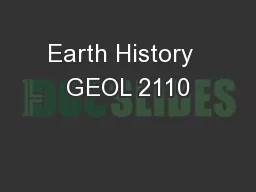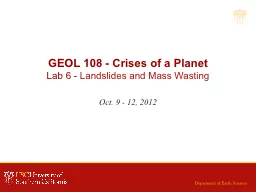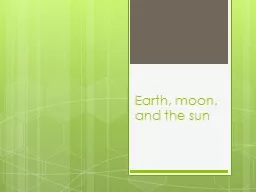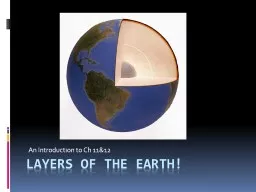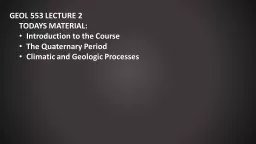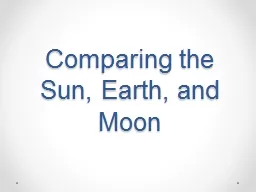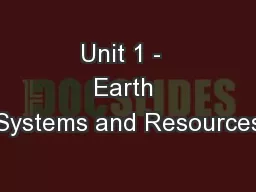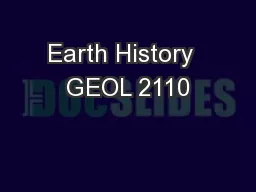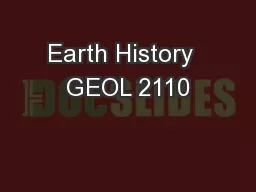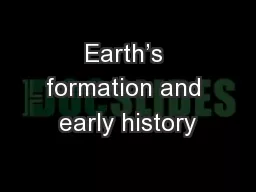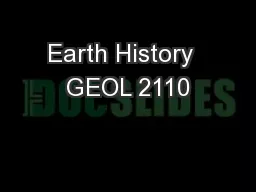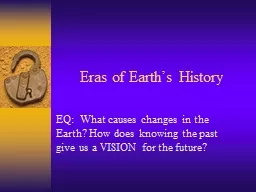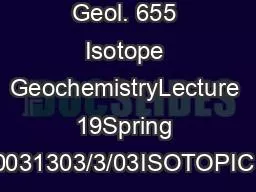PPT-Earth History GEOL 2110
Author : danika-pritchard | Published Date : 2018-09-23
The Pleistocene Epoch The Dawn of Humans and the Effects of Climate on Civilizations Major Concepts Climatic changes produced distinctive flora and fauna that was
Presentation Embed Code
Download Presentation
Download Presentation The PPT/PDF document "Earth History GEOL 2110" is the property of its rightful owner. Permission is granted to download and print the materials on this website for personal, non-commercial use only, and to display it on your personal computer provided you do not modify the materials and that you retain all copyright notices contained in the materials. By downloading content from our website, you accept the terms of this agreement.
Earth History GEOL 2110: Transcript
The Pleistocene Epoch The Dawn of Humans and the Effects of Climate on Civilizations Major Concepts Climatic changes produced distinctive flora and fauna that was adapted to cold weather Among flora were the expansion of grasslands tundra boreal spruce forests and hardwood forests. *Correspondingauthor.E-mailaddresses:fcorsett@usc.edu(F.A.Corsetti),kaufman@geol.umd.edu(A.J.Kaufman).Earth-ScienceReviews73(2005)63 Lab . 6 . - . Landslides and Mass Wasting. Oct. . 9. . - . 12. , . 2012. Department of Earth Sciences. Department of Earth Sciences. REVIEW . | . 2. QUIZ . 4 . REVIEW. Mauna . Loa. Mauna . Kea. What . Key terms:. Solstice: day when the sun appears farthest North or South of the equator. Northern hemisphere receives the most sunlight of the year around June 21 on the summer solstice.. Phase: shape of the moon you see from Earth.. An Introduction to Ch 11&12. Regions of the Earth. The Earth is made up predominantly of two major regions:. A predominantly molten, central core. A mostly solid outer mantle and crust. Hydrosphere and Crust . 2. TODAYS . MATERIAL:. Introduction to the Course. The Quaternary . Period. Climatic . and Geologic Processes. Instructor:. Jason Robert Patton . Email: . Jason.Patton@humboldt.edu. . Office:. Founders Hall 22 . The Sun. What physical features do you notice?. How does the Sun compare to the Earth and Moon?. What does the Sun provide for the Earth?. Physical Characteristics of the Sun. Sunspots. Solar Flare. Lecture . 9. Absolute Dating of the Earth. Major Concepts. The discovery of radioactivity in the early 1900’s and the recognition that . radioactive deca. y . (a statistical event) . occurs at a constant average rate for particular unstable isotopes has provided a means of determining the absolute ages of earth materials. Geological Time Scale. AIM: . How have stratigraphy and radiometric dating been used to construct the geological time scale?. The History of Earth. Earth’s history has been studied through 2 methods:. Lecture 9. Absolute Dating of the Earth. Major Concepts. The discovery of radioactivity in the early 1900’s and the recognition that . radioactive decay . (a statistical event) occurs at a constant average rate for particular unstable isotopes has provided a means of determining the absolute ages of earth materials. The Mesozoic Era. Geologic and Tectonic History of the . North American Cordilleran. Major Concepts. The geologic history of Cordilleran . Orogen. of North America during the Mesozoic Era was dominated . How old is the earth?. How old is our earth?. Aristotle thought the Earth had existed eternally.. Early Romans believed its formation was relatively recent due to no records before the Trojan War.. 1640 – Ussher calculated Earth was created in . Lecture 7. Fundamentals of . Stratigraphy. . I. Geologic Time Scale, . Stratigraphic. Units, Sedimentary . Facies. Major Concepts. In the early 1800’s, the geologic rock record and time scale was deciphered from careful mapping and observations of fossil assemblages throughout Europe. Eras of Earth’s History EQ: What causes changes in the Earth? How does knowing the past give us a VISION for the future? Precambrian Time Eon Precambrian Time Eon 4.6 billion years ago-545 million years ago COMMON plumeswere initially thought to consist of primitive mantle (e.g., Schilling, 1973). As we found, mixing be-tween primitive and depleted mantle can explain the Sr and Nd isotopic compositions
Download Document
Here is the link to download the presentation.
"Earth History GEOL 2110"The content belongs to its owner. You may download and print it for personal use, without modification, and keep all copyright notices. By downloading, you agree to these terms.
Related Documents

